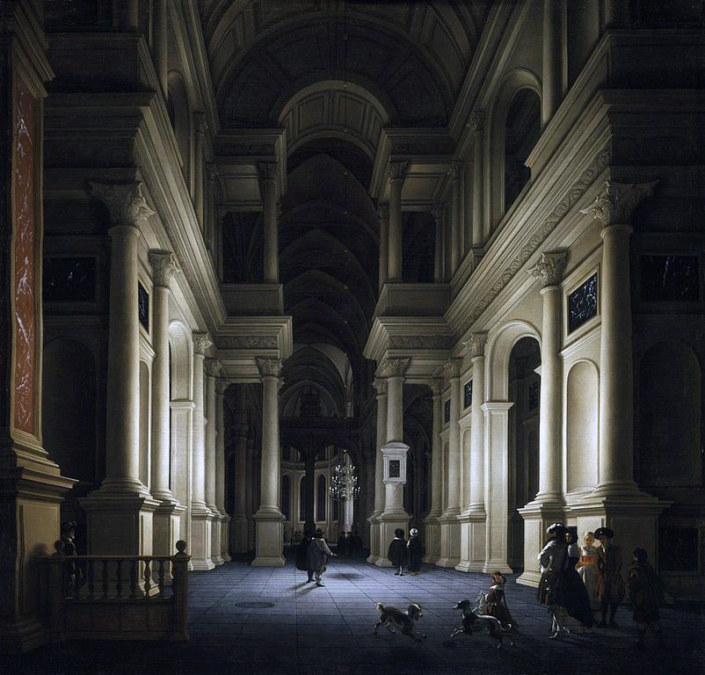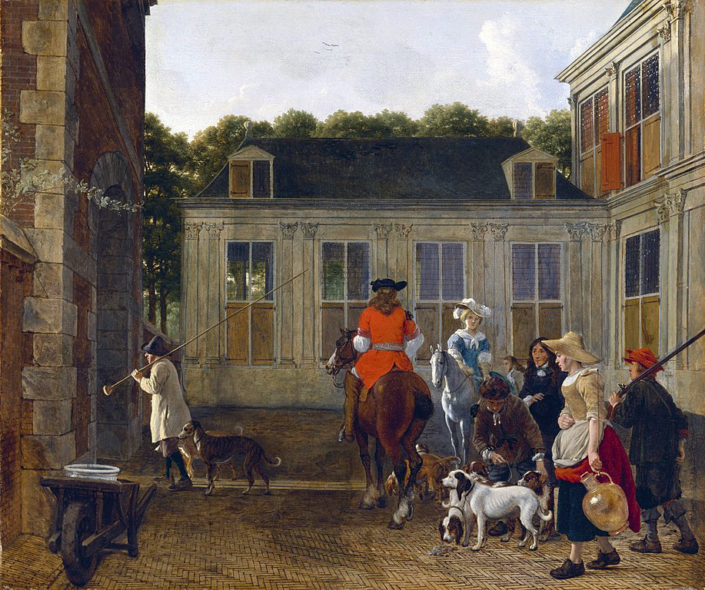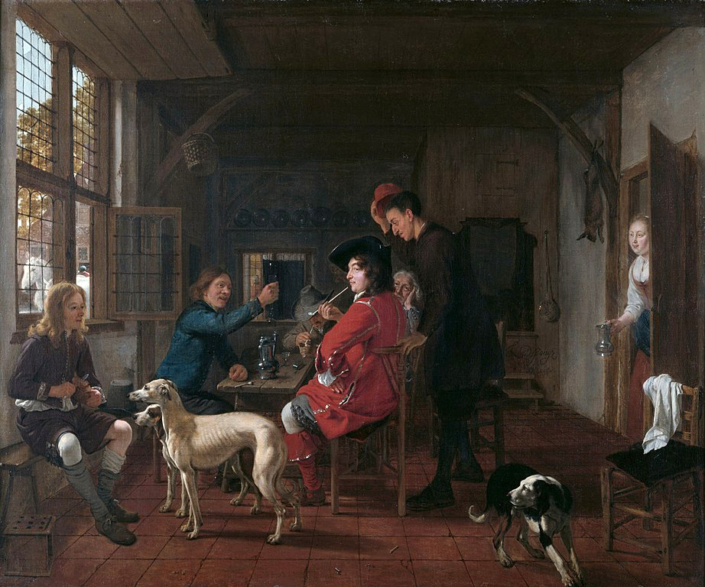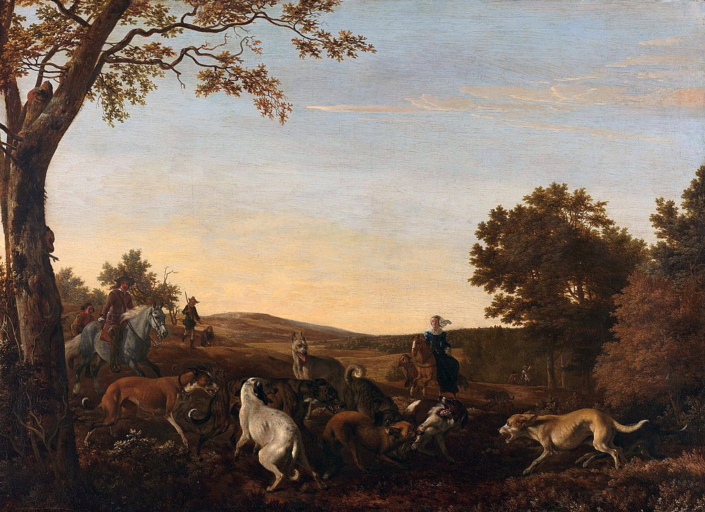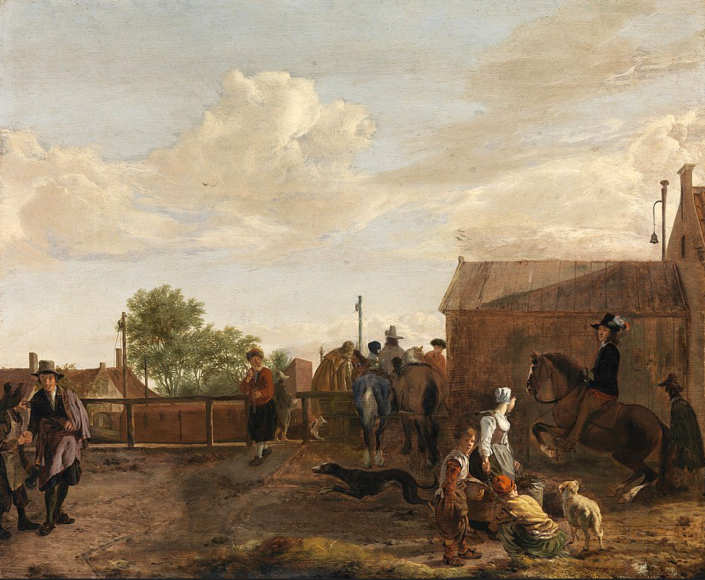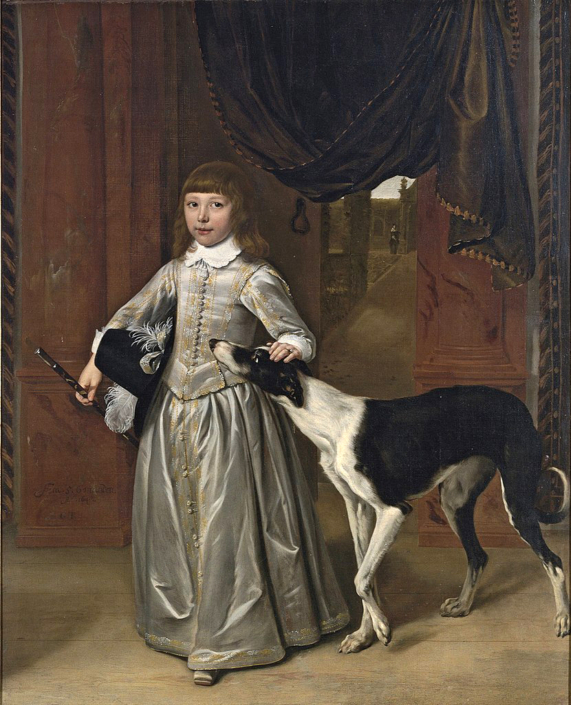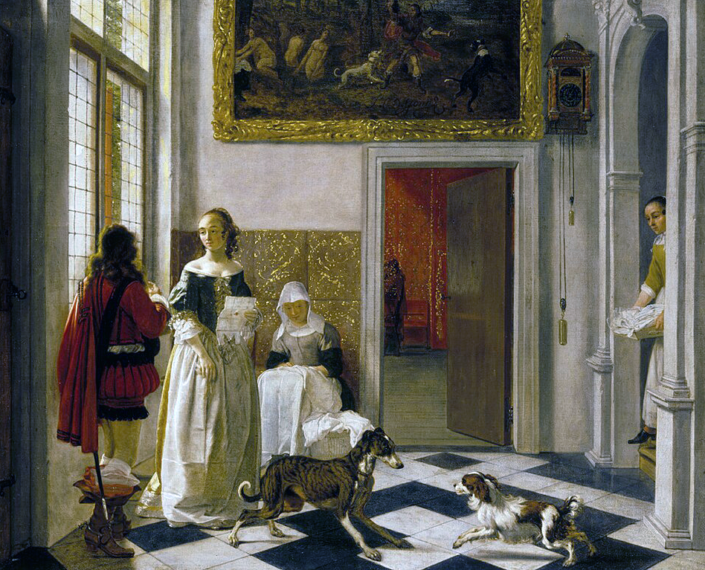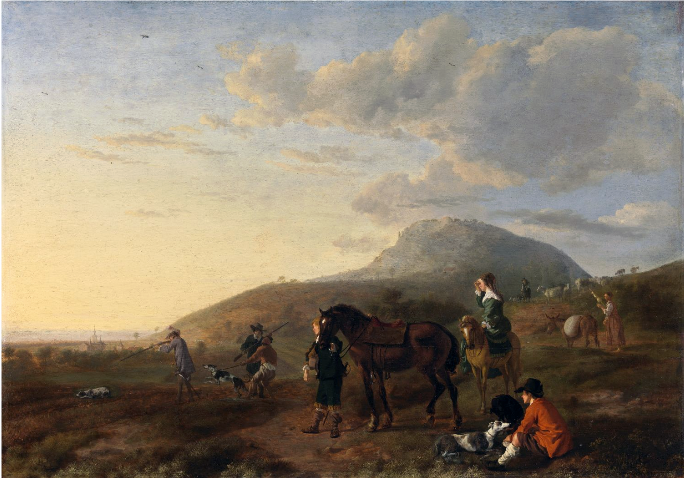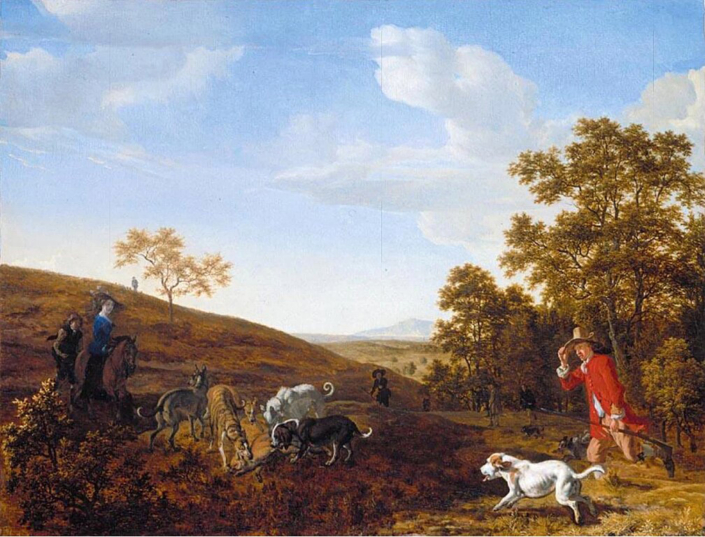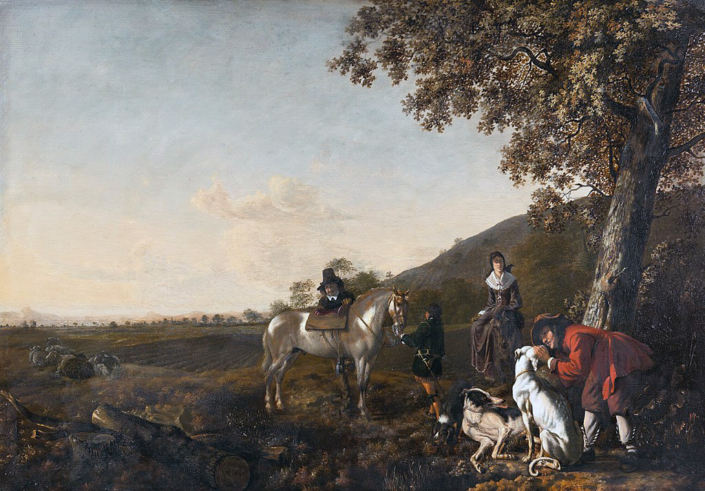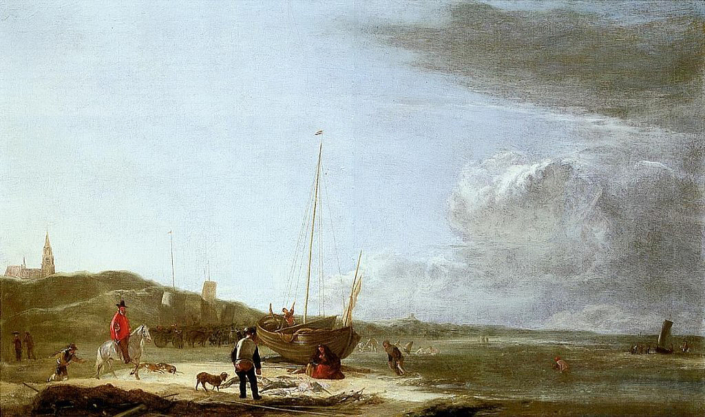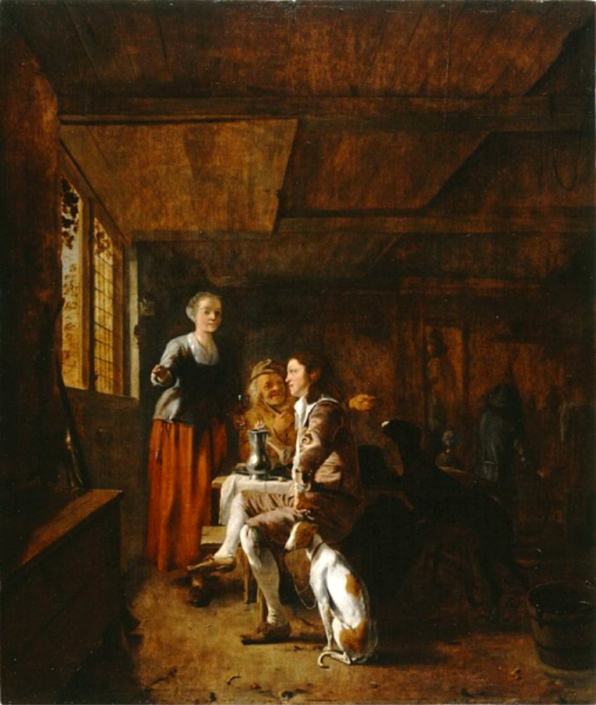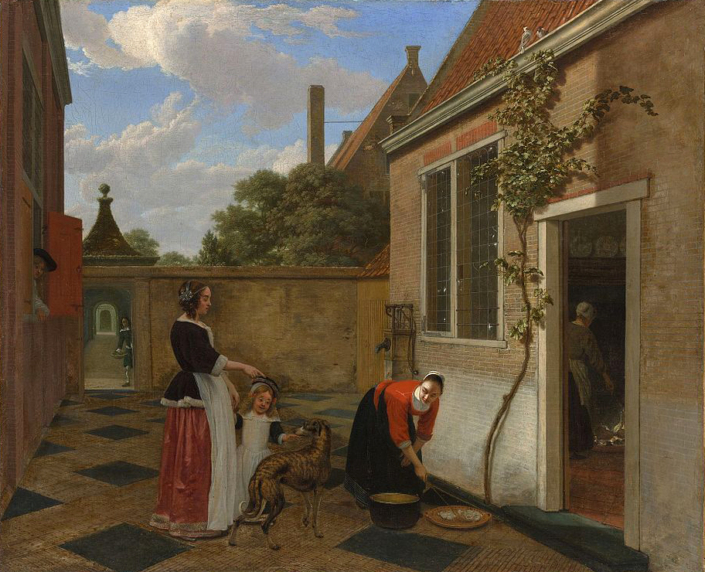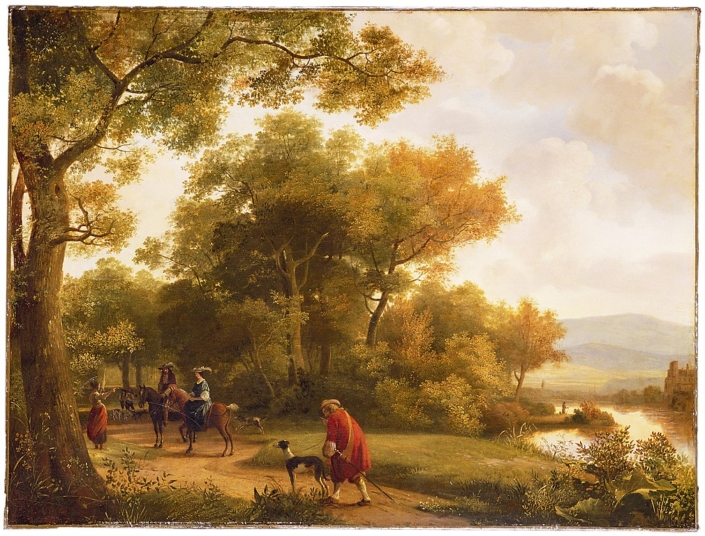1616 – 1679
Ludolf or Leuff or Lieve Leendertszoon de Jongh, also known as Jong (Rotterdam in the suburb of Overschie, 1616 – Rotterdam in the suburb of Hillegersberg, 1679), was a Dutch painter of the Golden Age, renowned for his eclecticism. He was the son of Annetje Leuven and Leendert Leendertszoon de Jongh, a cobbler and from 1647 an innkeeper in Rotterdam, and had three brothers and a sister, Teuntje, who married Isaac Sheppard. According to Descamps, his father wanted Ludolf to continue his profession, but after receiving excessive punishment for ruining shoes, he decided to change careers. Given his natural aptitude for art, he turned to painting. According to Houbraken, he studied under Cornelis Saftleven in Rotterdam, Anthonie Palamedes in Delft, and finally Jan van Bijlert in Utrecht.
In 1635, he traveled to France with Francis Bacon to further his studies and stayed there for seven years. He particularly stayed in Paris until his father summoned him back home due to his mother’s poor health.
Upon his return to Rotterdam, he married Adriana Montagne from Schoonhoven on January 28, 1646, whose sister Gertrude had married the painter Dirck Wijntrack, and who came from a wealthy family. In February 1647, his mother passed away and was buried in Prinsenkerk. On December 28 of the same year, Ludolf became the guardian of the minor children.
On August 12, 1652, due to the influence of his father-in-law, de Jongh was appointed an officer of the Schutterij. That same year, he found a house in Hoogstrat, borrowing money from the mayor and later through mortgages arranged with the Van Zoelen ladies.
He became a successful portrait painter and amassed wealth. On January 19, 1670, his father passed away. The earliest known paintings by this artist, portraits and genre paintings, date back to around 1642, after his return to Rotterdam. They show the influence of Anthonie Palamedes. His later works, executed just before 1650 and representing genre subjects and hunting scenes, reveal similarities to the style of Jan van Bijlert and other Utrecht painters, especially Jacob Duck and Dirck Stoop (Caravaggisti of Utrecht).
In the decade around 1650, de Jongh likely attained a prominent position among the painters of Rotterdam. Utilizing the most innovative techniques of the period, particularly chiaroscuro, he achieved greater expressiveness in portraiture. His works influenced the young Pieter de Hooch.
From 1660 onwards, he began to reduce his output of paintings, probably due to his entrepreneurial initiatives, his duties as an officer of the militia of Rotterdam, and his work as a sheriff in Hillegersberg.
While most painters of the time tended to specialize in particular branches of painting, de Jongh was extremely versatile and engaged in multiple genres: portraits, genre paintings representing both domestic and military life scenes, landscapes with hunting scenes, and historical subjects.
Due to the wide variety of painting genres, the habit of not signing his works, and the modification of his style in response to changes in Dutch art, attributing his paintings correctly can be challenging or erroneous.
He collaborated with Abraham Hondius.


